Contact us for a free quote!
Importance of Indoor Pool Dehumidification
Indoor pool dehumidification is of significant importance for various reasons related to comfort, safety, and maintenance of the pool environment. Here are some of the key significances of indoor pool dehumidification:
1. Preventing Condensation and Moisture Damage:
High humidity levels in indoor pool areas can lead to condensation on surfaces, including walls, windows, and ceilings. This can cause structural damage, promote mold growth, and compromise the integrity of building materials.
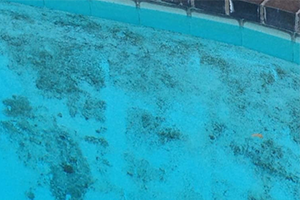
2. Enhancing Air Quality:
Dehumidification helps maintain better air quality by reducing the levels of moisture and potential allergens in the air. This creates a more comfortable and healthier environment for pool-goers.
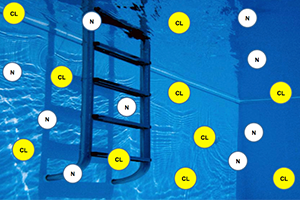
3. Improving Comfort and Safety:
Excess humidity can create an uncomfortable and clammy atmosphere for pool users. Dehumidification helps maintain a more comfortable and enjoyable environment. Additionally, it reduces the potential for slips and falls due to wet floors caused by excess moisture.
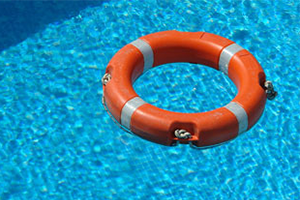
4. Protecting Building Materials and Furnishings:
High humidity can lead to the deterioration of building materials, including wood, metal, and insulation. Dehumidification helps protect these materials from damage and extends their lifespan.
5. Minimizing Mold and Mildew Growth:
Mold and mildew thrive in high-humidity environments. Dehumidification significantly reduces the risk of mold growth, which can be a serious health concern and lead to costly remediation efforts.
6. Preserving Pool Equipment:
Excessive moisture can corrode pool equipment, including pumps, motors, and filters. Dehumidification helps prevent damage and extends the lifespan of these essential components.
7. Maintaining Water Quality:
High humidity levels can lead to rapid evaporation of pool water, which may result in imbalances in water chemistry. Proper dehumidification helps stabilize water levels and reduces the need for frequent adjustments.
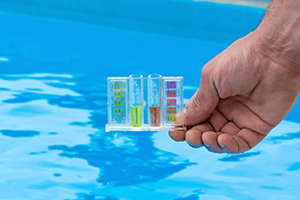
8. Preventing Damage to Surrounding Areas:
Indoor pool areas are often adjacent to other spaces within a building. Excess moisture can migrate to these areas, potentially causing damage to flooring, walls, and fixtures.
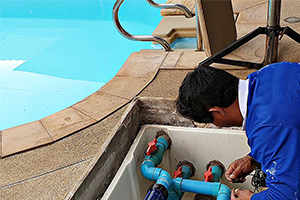
9. Reducing Energy Costs:
Efficient dehumidification systems can help reduce energy costs associated with heating, ventilation, and air conditioning (HVAC) systems. By maintaining proper humidity levels, HVAC systems can operate more efficiently.
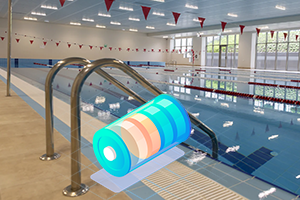
10. Compliance with Building Codes and Regulations:
Many building codes and regulations require indoor pool facilities to have effective dehumidification systems in place to ensure the safety and integrity of the structure.
11. Enhancing the Overall Pool Experience:
A well-controlled indoor pool environment with appropriate humidity levels provides a more enjoyable experience for pool-goers, which can lead to higher customer satisfaction and repeat business.
12. Maintaining Aesthetic Appeal:
Proper dehumidification helps preserve the appearance and aesthetic appeal of the indoor pool area, including finishes, paint, and furnishings.
Indoor pool dehumidification helps protect the integrity of the building, ensures the well-being of occupants, and maintains the quality of the pool and its surrounding areas.
Working Process of the Indoor Pool Dehumidification
A dehumidifier in an indoor pool area works by removing excess moisture from the air, which helps maintain a comfortable and healthy environment.
Types of Dehumidifiers Indoor Pool
Choosing the right dehumidifier for an indoor pool room is crucial to maintaining a comfortable and safe environment.
1. Refrigerant Dehumidifiers:
Advantages:
Suitable for pool areas with moderate humidity levels.
More energy-efficient than desiccant dehumidifiers in certain conditions.
Lower initial cost compared to desiccant models.
Considerations:
May not be as effective in very high-humidity environments.
Recommended machine:
The PRO230 swimming pool dehumidifier is a refrigerant dehumidifier that works efficiently in high RH environments and is cost-saving.
2. Commercial Pool Dehumidifiers:
These are specifically designed for larger pool areas and are capable of handling higher moisture loads.
Advantages:
Can provide dehumidification for larger indoor pools.
May include advanced features for automated operation and control.
Considerations:
Often larger and may require professional installation.
Recommended machine:
The PRO330 is a high-quality commercial dehumidifier for indoor pool that can be installed on the wall or the ceiling and connected to a pipe for direct drainage.
3. Ducted Dehumidifiers:
These dehumidifiers can be integrated into the HVAC system and ducted throughout the pool area, providing even humidity control.
Advantages:
Offer centralized dehumidification for larger pool rooms.
Can be more discreet and aesthetically pleasing.
Considerations:
May require professional installation and ductwork modifications.
Recommended machine:
The PRO500 is a commercial ducted dehumidifier that can precisely control the RH in large pool rooms and work efficiently.
4. Stainless Steel or Corrosion-Resistant Dehumidifiers:
These are designed to withstand the corrosive effects of pool chemicals and high humidity levels.
Advantages:
Resistant to corrosion and compatible with pool environment.
Considerations:
May come at a premium price.
Recommended machine:
The PRO165 pool house dehumidifier is a hand-type machine that is easy to move and suitable for smaller pool rooms. The machine is made of sheet metal which is resistant to collision and corrosion.
Ready to learn more?
Post time: Sep-21-2023






